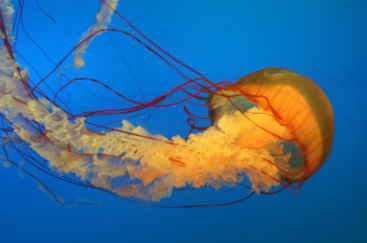eDNA Sampling For Species Identification: 7 Examples
Environmental DNA (eDNA) sampling for species identification has revolutionized biodiversity monitoring by enabling highly accurate, cost-effective,...
4 min read
 Manoj Dadlani
:
Oct 14, 2025 10:52:47 AM
Manoj Dadlani
:
Oct 14, 2025 10:52:47 AM

Environmental DNA (eDNA) represents a revolutionary, molecular approach for rapid, non-invasive detection and management of aquatic invasive species and their impact on endangered native wildlife. By analyzing genetic material shed into water-cellular fragments, mucus, scales, specialists and conservation managers gain an early warning system to protect ecosystem health before invaders establish permanent, harmful populations.
At Cmbio, cutting-edge eDNA metabarcoding research supports the swift identification, monitoring, and surveillance of both invasive and native species.
Environmental DNA (eDNA) refers to short DNA fragments shed from organisms into aquatic systems and terrestrial environments; these naturally occurring traces allow detection of single species, rare species, and entire communities without harming wildlife. eDNA persists in aquatic environments for anywhere from 7 to 21 days, depending on local conditions: water temperature, salinity, and particulate chemistry have significant effects on persistence and detectability.
Compared to conventional netting and survey methods, eDNA metabarcoding enables identification of hundreds of fish, aquatic species, and even pathogens from a single water sample. Studies have found that bulk DNA metabarcoding reduces sample processing both in time (44 % faster) and cost (26 % cheaper) compared to the morphology-based identification.
Cost/Time Savings: eDNA metabarcoding lowers monitoring costs (up to 55% savings) and enables species coverage for hundreds per sample, compared to limited effort in netting or visual surveys.
Organisms shed DNA through skin cells, scales, feces, and mucus; persistence varies according to environmental conditions. In marine systems, eDNA degrades 1.6 times faster inshore than offshore. This informs routine sampling schedules for managers and the accuracy of invasive species surveillance.
Early detection via eDNA sampling increases eradication success rates and reduces ecosystem restoration costs. Asian carp monitoring programs in Chicago waterways detected eDNA before physical capture, allowing for rapid response and preventing population expansion. These proactive approaches enable conservation specialists to react before invasive aquatic species become uncontrollable threats.
Lodge et al. (Cornell/US Army Corps) pioneered the use of eDNA sampling for invasive carp in Chicago waterways. This established eDNA as a reliable surveillance tool for fisheries management and invasive species managers.
eDNA metabarcoding accurately detects newly introduced marine invasive species at UK coastal sites and often identifies rare species missed by visual surveys. Standardized protocols allow for rapid, reliable biodiversity monitoring in introduction hotspots (ports and marinas).
The endangered white-clawed crayfish in UK rivers is threatened by invasive signal crayfish, which carry crayfish plague. eDNA monitoring detected outbreaks early, enabling conservationists to relocate healthy populations before mass die-offs occurred. Similar approaches detected seven carnivore species, including tigers, in Bhutan’s biodiversity surveys, supporting recovery of threatened species.
Crayfish plague is fatal to native white-clawed crayfish, but eDNA surveillance offers early detection and extended monitoring windows, outperforming conventional trapping methods. This lets aquatic research centers manage biodiversity conservation programs, track disease, and prevent the spread of fatal pathogens, also aiding fish conservation efforts.

eDNA detected carnivores (tigers, Asian black bear, leopard cat) and ungulates in Bhutan, often identifying rare, elusive species missed by camera traps. This demonstrates the power of eDNA techniques for species distribution mapping in pristine rivers and terrestrial environments.
|
Method |
Sensitivity |
Cost |
Time Required |
Species Coverage |
Wildlife Impact |
|
eDNA Sampling |
High, detects rare species |
55% lower |
Hours–days |
Hundreds/sample |
Non-invasive |
|
Traditional Netting |
Moderate |
High |
Days–weeks |
Limited |
Potential harm |
|
Visual Surveys |
Low for rare species |
Variable |
Weeks–months |
Observer-dependent |
Minimal |
eDNA assays provide higher sensitivity, specificity, cost-effectiveness, and coverage for invasive species surveillance, while traditional methods still add value for physical confirmation and population estimates.
eDNA can complement existing programs by providing additional layers of genetic data and early warning.
Main limitations include the risk of false positives (contamination, DNA transport) and false negatives (degraded material or inadequate protocols). Implementing rigorous sampling protocols, chain of custody, quality control, and data interpretation guidelines helps managers minimize errors and draw confident conclusions.
Regulatory approval for eDNA monitoring depends on following chain-of-custody procedures, validated laboratory protocols, and clear interpretive standards; these ensure defensible, actionable results for wildlife services and management agencies.
Automated eDNA sampling, cloud-based bioinformatics platforms, and AI-based analysis promise to boost routine monitoring, enhance species detection, and streamline collaborative conservation management. Reference database expansion will further improve accuracy and utility for invasive species specialists and managers.
Explore how Cmbio’s expertise in eDNA metabarcoding research, regulatory-compliant sequencing, and integrated bioinformatics drives next-generation biodiversity monitoring for aquatic and terrestrial environments.
Environmental DNA methods allow scientists to detect aquatic species by collecting water samples and analyzing them for genetic material shed by organisms, including rare and elusive invaders. eDNA assays can identify both invasive and native species at much lower population levels than traditional surveys, enabling rapid response before fish populations are negatively impacted. These non-invasive approaches promote wildlife and fish conservation by supporting routine monitoring of aquatic species in rivers, lakes, and coastal environments.
eDNA surveys require only a single water or soil sample to detect invasive species, often at much lower densities than conventional methods such as netting or visual surveys. This efficiency results in substantial cost and time savings, and can be performed by both professionals and trained volunteers for broad-scale wildlife and fish conservation efforts. eDNA surveys provide precise, taxonomically reliable data, essential for tracking changes in fish populations and aquatic biodiversity, recovering rare species, and preventing ecosystem disruption from undetected invasive species.
Yes, eDNA methods are increasingly used to monitor fish populations and support wildlife and fish conservation through highly sensitive detection, community composition analysis, and longitudinal tracking of both native and invasive species. By combining eDNA assays with next-generation sequencing, scientists can assess the abundance, biomass, and distribution of fish populations, leading to improved management and protection of aquatic ecosystems, more effective conservation practices, and early warning of population declines or invasive species threats.

Environmental DNA (eDNA) sampling for species identification has revolutionized biodiversity monitoring by enabling highly accurate, cost-effective,...

Aquaculture is rapidly reshaping the world’s seafood supply, but what does this mean for our oceans, coastlines, and aquatic ecosystems?

From climate change and conservation to food security and human health, some of today’s most pressing global challenges are being tackled through an...